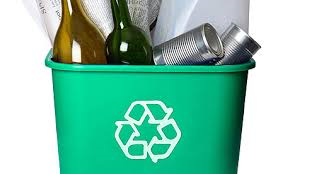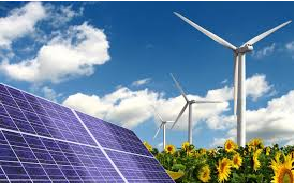When the King of Pop Michael Jackson crooned “Heal the World†and the Earth song more than two decades ago, he was singing for peace. He was singing to save the world from destruction at the hands of humans. I would say it’s not entirely a bad thing that he’s no more to see that his words fell on deaf ears.
Just to clarify, this post is not about war and civilian unrest that plague many parts of the world. I am talking about destruction of a different kind – environmental destruction – brought on by none other than us humans. Different? Yes. Less dangerous? No.
Look around yourself – global warming, mass animal deaths, habitat loss, extreme weather events, natural resource depletion – do we need more proof that we’re about to self-destruct as well as destroy many other forms of life for no fault of theirs?
That said, I don’t want to sound like an alarmist. Instead, I want to offer solutions. I want to make suggestions – simple ones that we all can implement in our daily lives, those that can go a long way to save the planet from environmental annihilation. Here are five of them:
1. Recycle: I cannot stress enough on the role recycling plays in helping the environment. It reduces the amount of waste going into landfills that are a ticking time bomb in themselves. Recycling, especially scrap metal recycling, helps conserve natural resources. Sims Metal Management, a leading metal recycling company, shares some handy scrap metal recycling tips in this infographic. Recycling also helps reduce energy consumption and greenhouse gas emissions, believed to be the leading cause of global warming. Additionally, recycling prevents the destruction of natural habitat, loss of biodiversity, as well as air, water and soil pollution. Learn some more amazing facts about recycling!

(Source: theguardian.com)
2. Eat less meat: Before you start gasping for breath, I am not for a moment suggesting that you go on a vegan diet. But going meatless one day a week doesn’t sound so preposterous, does it? According to the United Nations Food and Agriculture Organization, the meat industry is responsible for more than one-fifth of the greenhouse gas emissions generated by humans. Add to that the copious amounts of water livestock requires and the energy needed to feed them, and you have the makings of an industry that guzzles resources at an alarming rate. Just cutting down on your meat consumption by a fraction can slow down this disturbing trend.

(Source: livestockdialogue.org)
3. Use water sparingly: Don’t roll your eyes just yet. I know you must be thinking there’s plenty of water to go around. Yes, it certainly seems that way. But only 1 percent of the water that covers the earth is freshwater, or water that we can use. As much as 97 percent is salty and 2 percent is ice, according to this paper. The paper also shares some handy tips on how you can save water at home and in your garden/yard.

(Source: themicrogardener.com)
4. Drive fuel-efficient vehicles: If I could, I would replace all the cars in the world with their greener versions. After all, vehicles are responsible for approximately 51 percent of CO2 emissions in America. That said, I also understand the argument many have against them – cost being one of the biggest hurdles to adoption. If you can’t or don’t want to buy a hybrid car, get one that is the most fuel efficient in the segment you’re looking at. You can also practice the tenets of fuel economy to reduce your carbon footprint and try to walk/cycle/carpool or use public transport as much as possible.

(Source: kiplinger.com)
5. Use alternative sources of energy: According to the U.S. Energy Information Administration (EIA), electricity generation caused 39 percent of the total energy-related CO2 emissions in America in the year 2012. Using renewable sources of energy, which means harnessing wind, sunlight (solar), heat (geothermal), water (hydroelectric), and biomass, to generate power has significant benefits for the environment, reduced greenhouse gas emissions being one of them. These sources are also freely and abundantly available in the environment, so there’s no risk of running out as is the case with non-renewable sources of energy like coal, natural gas, oil, etc. Get committed by learning more about renewable energy credits.

(Source: tenva.org)
So, are we ready to live up to MJ’s words? Are we ready to heal the world? All it will take is for each one of us to make some adjustments in the way we live. We can save the planet from certain destruction!





